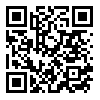Received: 2015/12/21 | Accepted: 2016/04/4 | Published: 2016/04/23
URL: http://ijwph.ir/article-1-548-en.html
BibTeX | RIS | EndNote | Medlars | ProCite | Reference Manager | RefWorks
Send citation to:
2- Nursing & Midwifery Faculty, Islamic Azad University, Khorasgan Branch, Isfahan, Iran, Critical Nursing, Department, Nursing and Midwifery Faculty, Hezarjerib Street, Isfahan University of Medical Sciences, Isfahan, Iran
3- “Nursing & Midwifery Care Research Center” and “Critical Nursing Department, Nursing & Midwifery Faculty”, Isfahan University of Medical Sciences, Isfahan, Iran ,
4- Nursing Department, Nursing & Midwifery Faculty, Islamic Azad University, Khorasgan Branch, Isfahan, Iran
Aims: As one of the major bases to improve the society health, the empowerment improves self-care behaviors and health in the client. Since the spouses of the veterans are the first care and support resource for their wives, they can play an important role to empower their wives. The aim of this study was to investigate the experiences of the spouses of the chemically injured veterans in their spouses’ empowerment.
Participants & Methods: In the qualitative study done by the descriptive phenomenological method, 11 spouses of the chemically injured veterans enrolled by Isfahan Martyrs and Veterans Foundation, who were living with their spouses, were studied in 2012. The subjects were selected via purposeful sampling method. Data, collected through semi-structured and deep interview, were analyzed by Colaizzi’s seven-step method.
Findings: From 217 primary codes gathered by the interviews, 16 conceptual sub-structures were obtained. The sub-structures were planning, relaxation, self-belief, support, role exchange, role play, cooperation, empathy, avoiding hopelessness, worthiness, sacrifice, beliefs and values, knowing the disease, social attitude, adaptation with the circumstances, and reconciliation with life. The sub-structures were classified under two major titles as “action for empowerment” and “personal capabilities of the spouses”.
Conclusion: After years of mutual living with a chemically injured veteran, the experiences of the spouse include two major concepts as “action for empowerment” and “personal capabilities of the spouses”. It shows that the spouses, besides different roles such as a spouse, a nurse, and a medication help, experience different problems and experimentally done effective works to empower their own spouses.








